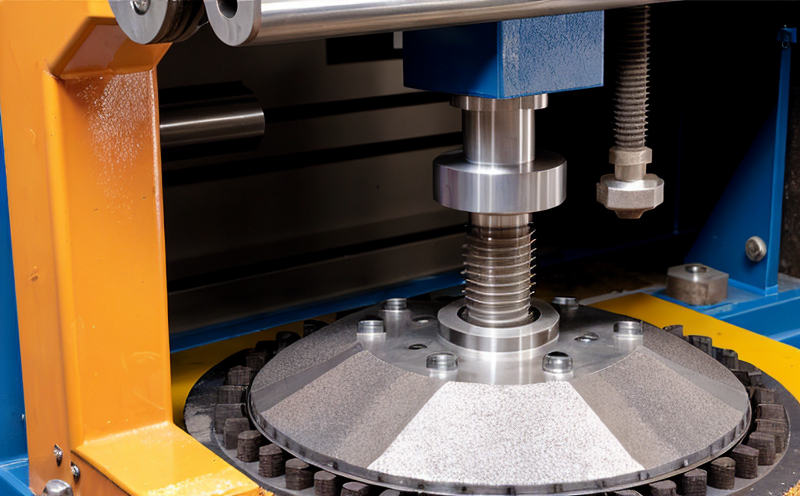EN 60068-2-27 Mechanical Shock Testing
The EN 60068-2-27 standard specifies procedures for determining the effect of mechanical shock on electrical and electronic equipment. This test is crucial in ensuring that HVAC (Heating, Ventilation, and Air Conditioning) equipment can withstand the harsh environmental conditions they encounter during installation and operation.
During the testing process, specimens are subjected to a defined series of impacts designed to simulate real-world shock events such as those caused by rough handling or transportation. The standard defines specific parameters including peak acceleration, duration, and waveform shape which must be adhered to in order to achieve valid test results.
The equipment used for this testing typically includes shaker tables capable of generating controlled mechanical shocks across a range of frequencies and amplitudes. Specimens are securely mounted on the shaker table and subjected to one or more cycles of shock pulses, depending on the specific requirements specified in the standard.
After each cycle, careful inspection is carried out to assess any visible damage. Acceptance criteria for this test can be found in Clause 7 of EN 60068-2-27 and typically involve checking for physical integrity without compromising functionality or performance. In cases where there are no apparent failures, the specimen may proceed to further stages of testing.
For HVAC equipment manufacturers, compliance with these standards is not just about meeting regulatory requirements but also enhances brand reputation by demonstrating a commitment to quality control and reliability. By incorporating EN 60068-2-27 into their product development lifecycle, companies ensure that they are producing robust products capable of performing reliably under challenging conditions.
It's important for industry stakeholders like quality managers, compliance officers, R&D engineers, and procurement professionals to understand the significance of this test. The results from EN 60068-2-27 provide critical insights into how well a product will perform in various environments throughout its lifecycle.
- Reduces risk of premature failure due to shock during transportation or operation.
- Promotes consistent quality across different batches of products manufactured by the same company.
- Facilitates easier compliance with international regulations governing electrical and electronic equipment.
In summary, EN 60068-2-27 mechanical shock testing plays a vital role in ensuring that HVAC equipment can withstand the rigors of real-world conditions. It helps manufacturers produce reliable products while complying with relevant standards and regulations.
Industry Applications
EN 60068-2-27 mechanical shock testing finds extensive application in various sectors, including HVAC equipment manufacturing. This test ensures that the components of these systems are capable of enduring shocks without sustaining damage or compromising their operational integrity.
In practice, this means that during installation and use, the units should continue to function correctly even if subjected to unexpected impacts. For instance, a rooftop air conditioning unit might experience significant mechanical shock due to being moved onto the roof via crane or being struck by debris during construction work.
The test also applies to other types of electrical and electronic equipment within the HVAC sector that are prone to experiencing similar conditions. By ensuring compliance with EN 60068-2-27, manufacturers can provide confidence to end-users regarding the durability and reliability of their products.
This standard is particularly beneficial for companies involved in designing, manufacturing, or distributing HVAC equipment internationally as it helps ensure consistency across different markets and regulatory requirements. It allows them to demonstrate that their products meet global standards for quality and performance.
Why Choose This Test
Selecting EN 60068-2-27 mechanical shock testing offers several advantages over other types of tests when it comes to assessing the durability of HVAC equipment. One key advantage is its ability to simulate real-world conditions accurately, providing valuable data that can be used during product development.
By subjecting specimens to controlled shocks according to predefined parameters outlined in the standard, manufacturers gain insight into potential weaknesses or areas for improvement before large-scale production begins. This allows for necessary adjustments to be made early on, reducing costs and time associated with rework later down the line.
The test also provides a standardized method of evaluation which ensures consistency across different batches produced by the same manufacturer. This promotes reliability and trustworthiness among customers who rely on consistent quality from their suppliers.
Another significant benefit is compliance with international regulations governing electrical and electronic equipment. Many countries have adopted EN 60068-2-27 as a benchmark for assessing shock resistance, making it easier for manufacturers to export their products worldwide.
In addition to these practical benefits, choosing this test demonstrates a commitment to quality control and reliability, enhancing brand reputation among consumers seeking dependable HVAC solutions. It shows that the company prioritizes meeting high standards set by industry leaders and regulatory bodies.
Frequently Asked Questions
Environmental and Sustainability Contributions
The environmental impact of EN 60068-2-27 mechanical shock testing extends beyond just ensuring product durability. By promoting robust construction, the test contributes to extending the service life of HVAC equipment. Longer-lived products result in reduced waste and lower resource consumption over time.
- Extended lifespan reduces the frequency of replacements needed.
- Lower production costs due to fewer replacements required.
- Promotes efficient use of resources by minimizing unnecessary product turnover.
This contributes positively towards sustainable manufacturing practices, aligning with broader goals of reducing environmental footprints and promoting circular economy principles. The rigorous testing process outlined in EN 60068-2-27 not only enhances the performance of HVAC systems but also supports efforts towards more sustainable global operations.





